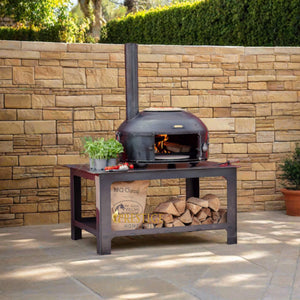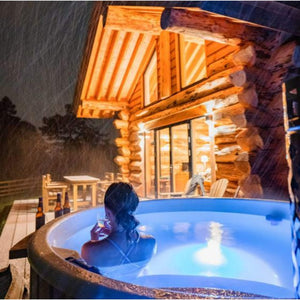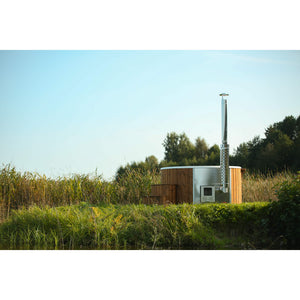Frequently Asked Questions About Wood Burning Hot Tub Care and Maintenance

Step into tranquillity with wood-burning hot tubs, timeless sanctuaries offering relaxation and rejuvenation. Discover their therapeutic benefits for body and mind, from soothing sore muscles to reducing stress. Explore care tips and unlock the transformative power of soaking in nature's embrace.
Here is a list of frequently Asked Questions About Wood Burning Hot Tub Care and Maintenance
1. How do I clean my wood burning hot tub?
Cleaning your wood burning hot tub is essential for maintaining water quality and hygiene. Use a non-abrasive sponge or cloth along with a mild cleaner to wipe down the interior surfaces of the tub. Rinse thoroughly with clean water afterward.
- Make sure the stove has cooled down before draining the tub! Failure to do this could damage your stove.
- Drain the water out, and scrub all of the internal surfaces using a non abrasive sponge, cloth or brush and soap solution. Once complete, rinse down and refill.
- For hot tubs with liners, surfaces can be thoroughly wiped down in a similar fashion, before rinsing and refilling.
2. What should I do to prevent algae growth in my wood fired hot tub?
Algae growth can be prevented by regularly maintaining proper water chemistry. Ensure that the water pH level is within the recommended range (typically 7.2 to 7.8). Also, avoid leaving the tub uncovered for extended periods, especially in direct sunlight, as this can promote algae growth.
If the hot tub has a liner (fibreglass or polypropylene) you may use chlorine if you wish to keep using the same water for longer.
3. How often should I change the water in my wood fired hot tub?
It's tricky to give a straightforward answer because it varies! For wooden tubs, avoid using chemicals, so it's best to change the water every 2-3 days when using it often. Keep the lid on when not in use to prevent debris from getting in.
If you have a lined tub like fiberglass or polypropylene, you can use chlorine, natural equivalents or filtration systems to keep the water clean for longer, even weeks.
In places like glamping sites or vacation rentals, it's a good idea to change the water for each new guest.
In general it's recommended to change the water in your wood burning hot tub every 2 to 3 days for untreated and 2 to 4 weeks for treated depending on usage frequency and water quality.
Regularly changing the water helps maintain hygiene and prevents the build up of impurities.
4. Can I use chlorine or other chemicals to sanitize my wood burning hot tub?
Since wood-burning hot tubs typically don't have a filtration system, it's best to avoid using chlorine or other harsh chemicals. Instead, opt for natural sanitisers such as bromine or mineral-based solutions specifically designed for wood-fired hot tubs.
If the hot tub has a liner (fibreglass or polypropylene) you may use chlorine if you wish to keep using the same water for longer.
So, Chemicals can be used with lined tubs (fibreglass or polypropylene) where the water doesn’t come into contact with the timber facade but they are not required.
Using chemicals will simply allow the same water to be retained for longer, between cleaning.
5. How do I maintain the water temperature in my wood burning hot tub?
The water temperature in your wood fired hot tub can be maintained by adding more firewood to the stove or adjusting the air intake to regulate the heat. It's essential to monitor the temperature regularly using a thermometer and adjust accordingly to ensure a comfortable soaking experience.
6. What type of wood should I use for my wood fired hot tub?
Hardwoods such as oak, cedar, or maple are ideal for wood burning hot tubs due to their slow-burning properties and resistance to rot. Avoid using softwoods like pine or spruce, as they tend to burn quickly and can release resin into the water, causing potential maintenance issues.
7. How can I prevent rusting of the metal components in my wood burning hot tub?
To prevent rusting, regularly inspect metal components such as the stove, bands, and fittings for any signs of corrosion. Keep these parts dry when not in use and apply a rust-resistant coating if necessary. Additionally, ensure proper ventilation to reduce moisture buildup, which can accelerate rusting.
8. What should I do if I notice a strong odor coming from my wood fired hot tub?
A strong odor could indicate bacterial growth or an imbalance in water chemistry. First, check the water pH and sanitizer levels and adjust as needed. If the odor persists, consider draining and thoroughly cleaning the tub, including the interior surfaces and any accessories, to eliminate bacteria and impurities.
Take a look at our range of high-quality Wood Burning Hot Tubs here.
- Neil Finnerty






